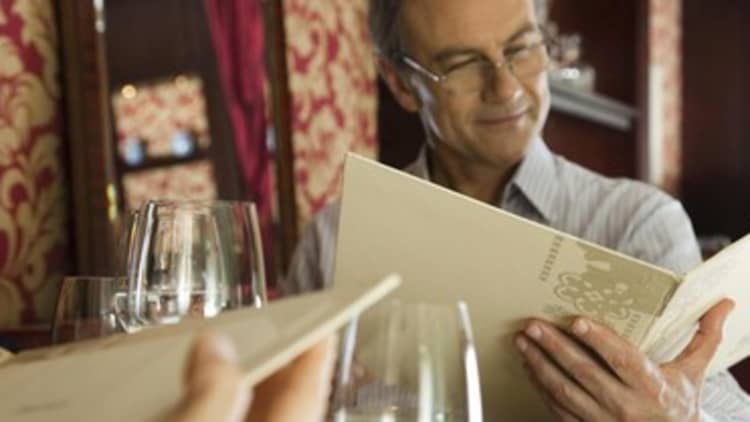
A restaurant exists to make money. Full stop.
This is not to say that a chef shouldn't be concerned with passion or creativity. It means that these qualities ultimately have to lead to profits — and that starts with the menu.
And psychology.
One strategy for steering the consumer is simply omitting dollar signs. A number is just a number, but somehow it looks bigger (and scarier) when it's preceded by a symbol. So, many restaurants simply leave out the dollar signs. Of course, 10 is still $10. And sometimes it's even "TEN."
Another trick — if it's fair to use that word — is anchor items. This is when a selection on the menu is vastly over-priced to diminish the sticker shock of other selections that are often in close proximity on the physical menu. In this scenario, the expensive item is a decoy. The restaurant doesn't necessarily care whether or not you order it, because, ultimately, you think you are saving by choosing a less expensive option.
And that's when profit margin comes into play.
A $15 item may seem like less money than a $20 item — and, technically, it is — but (using simple numbers for the sake of argument) if it only costs $5 to make, and the $20 option costs $15 to make, the restaurant actually pockets more money when you choose the less-expensive item. The decoy worked.
That being said, there's nothing inherently dishonest about restaurants trying to push items that are cheap to produce. If they taste good, everybody wins.
Take, for example, a well-known appetizer at P.F. Chang's. An order of Chang's Chicken Lettuce Wraps costs $9.25 (a.k.a. 9.25, a.k.a nine-twenty-five). It's literally iceberg lettuce, water chestnuts, green onion, mushrooms, and small bits of chicken. It's wildly popular, and cheap to make.
That's a win.
Watch the video to hear the hosts of "Restaurant Startup" discuss the importance of developing these types of creative menu items.
Tune in to "Restaurant Startup," Wednesdays at 10 p.m. ET/PT on CNBC, to watch entrepreneurs compete for the backing of the show's celebrity restaurateurs.




